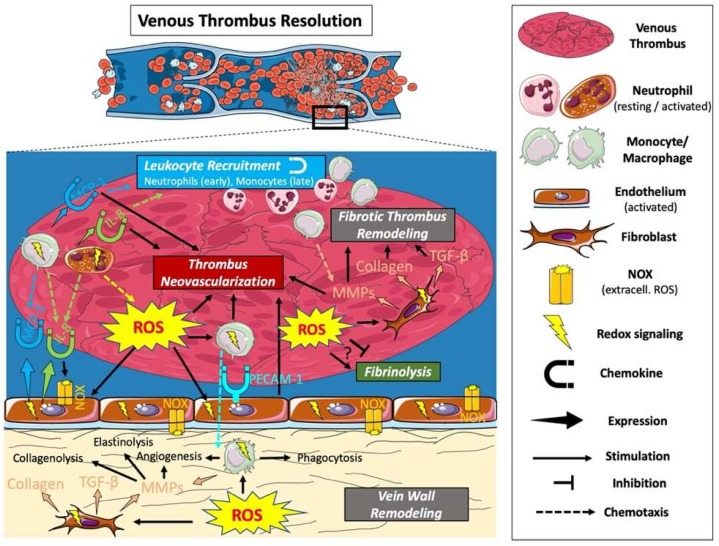Figure 3.
The role of ROS in the resolution of a venous thrombus. Oxidative stress at the site of a venous thrombus (intra- and abluminal) leads to the recruitment of leukocytes (with neutrophils predominating in the early, and monocytes predominating in the later phase of resolution) and fibroblasts. ROS-mediated cell recruitment results from direct chemotactic effects, or indirectly through increased expression of chemokines and adhesion molecules. The recruited cells promote thrombus resolution through phagocytic action removing red cell mass, thrombus and vein wall remodeling including fibrin degradation and the stimulation of new ECM deposition and neovessel formation. There are conflicting reports on whether fibrinolysis is stimulated or inhibited by ROS.

